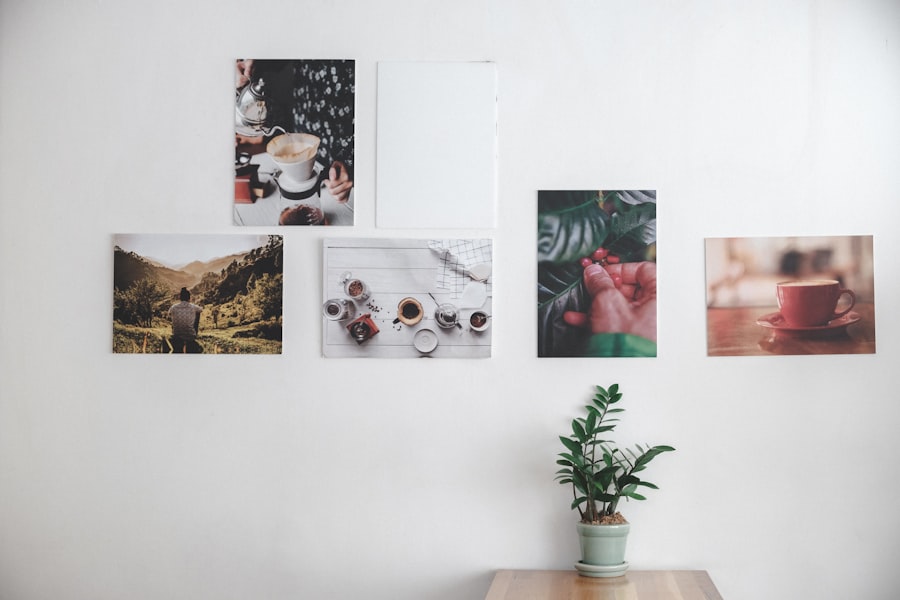Custom canvas prints have become a popular way to transform photographs into art pieces for wall decoration. This method involves printing high-resolution images onto canvas material, which is then stretched over a wooden frame to create a gallery-quality finish. The texture of the canvas adds depth to the images, making them more engaging than traditional paper prints.
As a result, custom Canvas Prints are widely used for home decor, gifts, and professional displays in various settings. The appeal of custom canvas prints stems from their aesthetic qualities and versatility. They can be customized to fit any space, from living rooms to offices and galleries.
Users can choose the size, orientation, and canvas type to match their personal style and preferences. Advancements in printing technology have enabled the production of high-quality images that maintain their vibrancy and detail over time. This ensures that canvas prints serve as enduring tributes to special moments, preserving memories in an artistic format.
Key Takeaways
- Custom canvas prints are personalized artworks created from digital photos and printed onto canvas material.
- When choosing canvas wall art, consider the size, style, and color scheme of the room where it will be displayed.
- Getting your photos printed on canvas involves selecting a reputable printing service, uploading your high-resolution image, and choosing the desired canvas size and finish.
- Enhancing your photos for canvas printing may involve adjusting the color, contrast, and sharpness to ensure the best possible print quality.
- Selecting the best canvas material involves considering factors such as texture, thickness, and durability to suit your specific needs and preferences.
- Tips for hanging and displaying canvas prints include using proper hardware, arranging multiple prints in a cohesive manner, and considering lighting and spacing.
- Caring for your canvas art prints involves avoiding direct sunlight, dusting regularly, and using gentle cleaning methods to preserve the quality of the artwork.
Choosing the Right Canvas Wall Art
Selecting the right canvas wall art is a crucial step in creating an inviting and harmonious atmosphere in any space. The first consideration should be the theme or mood you wish to convey. For instance, if you aim to create a serene environment, opting for soft colors and tranquil landscapes can evoke a sense of calm.
Conversely, bold and vibrant images can energize a room and stimulate conversation. It’s essential to think about how the artwork will complement existing decor elements, such as furniture, color schemes, and lighting. A well-chosen piece can serve as a focal point, drawing the eye and enhancing the overall aesthetic of the room.
Another important factor in choosing canvas wall art is the size and scale of the piece in relation to the wall space available. Oversized prints can make a dramatic statement, while smaller pieces may work better in clusters or as part of a gallery wall. When selecting sizes, consider the proportions of the room and the height at which the artwork will be hung.
Additionally, think about the viewing distance; larger pieces may require more space to be appreciated fully, while smaller prints can be placed closer together for an intimate feel. Ultimately, the right canvas wall art should resonate with your personal taste while harmonizing with the overall design of your home or office.
How to Get Your Photos Printed on Canvas

Getting your photos printed on canvas is a straightforward process that can yield stunning results when done correctly. The first step involves selecting the right image; high-resolution photographs are essential for ensuring clarity and detail in the final print. It’s advisable to choose images that are at least 300 DPI (dots per inch) to maintain quality when enlarged.
Once you have your image ready, you can either use online services or local print shops that specialize in canvas printing. Many online platforms offer user-friendly interfaces where you can upload your photo, select your desired size and format, and even preview how it will look on canvas before placing your order. After selecting a printing service, you’ll need to decide on additional options such as framing and finishing touches.
Some services provide options for gallery wraps, where the image extends around the edges of the frame, creating a seamless look that doesn’t require additional framing. Others may offer different types of canvas finishes, such as matte or glossy, which can affect the overall appearance of your print. Once your order is placed, the printing process typically takes a few days to complete, depending on the service provider’s workload.
Upon receiving your custom canvas print, you’ll be ready to display your cherished memories in style.
Enhancing Your Photos for Canvas Printing
| Aspect | Details |
|---|---|
| Resolution | Minimum 150 DPI for clear prints |
| Color Profile | Use sRGB for accurate colors |
| Image Size | Match canvas dimensions for best fit |
| Editing | Adjust brightness, contrast, and sharpness |
Before sending your photos off for canvas printing, it’s wise to enhance them to ensure they look their best on this medium. Basic adjustments such as cropping can help focus attention on the subject of the image while eliminating any distracting elements from the background. Additionally, adjusting brightness and contrast can significantly improve the overall appearance of your photo; brighter images with good contrast tend to translate better onto canvas than darker or overly flat images.
Utilizing photo editing software allows you to make these adjustments easily and experiment with various filters or effects that can add an artistic touch. Color saturation is another critical aspect to consider when preparing your photos for canvas printing. While vibrant colors can create eye-catching prints, it’s essential to strike a balance; overly saturated images may appear unnatural when printed.
A good practice is to slightly increase saturation while keeping an eye on how it translates on screen versus how it will look on canvas. Furthermore, consider applying sharpening techniques to enhance details without introducing noise or graininess into the image. By taking these steps to enhance your photos before printing, you can ensure that your custom canvas prints will be visually striking and true representations of your original images.
Selecting the Best Canvas Material
The choice of canvas material plays a significant role in determining the quality and longevity of your prints. There are various types of canvas available on the market, each with its unique characteristics that can affect both appearance and durability. Cotton canvas is one of the most popular options due to its natural fibers, which provide excellent texture and color reproduction.
It tends to absorb ink well, resulting in vibrant prints that maintain their quality over time. However, cotton canvas may be more susceptible to wear and tear compared to synthetic options. On the other hand, polyester canvas offers increased durability and resistance to fading, making it an excellent choice for prints that will be displayed in bright or sunlit areas.
This material is less prone to stretching or warping over time, ensuring that your artwork remains taut and visually appealing for years to come. Some manufacturers even offer blended canvases that combine both cotton and polyester fibers, providing a balance between texture and durability. When selecting canvas material for your prints, consider where they will be displayed and how much wear they might experience; this will help you choose a material that best suits your needs.
Tips for Hanging and Displaying Canvas Prints

Hanging and displaying canvas prints effectively can enhance their visual impact and contribute to the overall ambiance of a room. One key tip is to consider the height at which you hang your artwork; ideally, the center of the piece should be at eye level for optimal viewing. In spaces with multiple pieces of art, maintaining consistent spacing between them creates a cohesive look that draws attention without overwhelming the viewer.
A common guideline is to leave about 2-4 inches between each piece when creating a gallery wall arrangement. Another important aspect of displaying canvas prints is considering lighting conditions in the room. Natural light can enhance colors but may also lead to fading over time; therefore, it’s wise to avoid direct sunlight exposure if possible.
Using spotlights or track lighting can create dramatic effects while highlighting specific pieces in your collection. Additionally, think about incorporating other decorative elements such as shelves or plants around your canvas prints; this layering effect adds depth and interest to your display while allowing each piece to shine individually.
Caring for Your Canvas Art Prints
Proper care for your canvas art prints is essential for preserving their beauty and longevity over time. Regular dusting with a soft cloth or feather duster can help keep them clean without damaging the surface; avoid using harsh chemicals or abrasive materials that could scratch or degrade the canvas finish. If your print becomes stained or dirty, gently spot-cleaning with a damp cloth may suffice; however, it’s crucial not to saturate the canvas with water as this could lead to warping or mold growth.
In addition to regular cleaning, consider protecting your canvas prints from environmental factors that could cause damage. Maintaining stable humidity levels in your home can prevent warping or cracking; using dehumidifiers in particularly damp areas may be beneficial. If you live in an area with high levels of dust or pollution, consider placing your prints behind glass frames for added protection while still enjoying their beauty.
By taking these simple yet effective steps in caring for your canvas art prints, you can ensure they remain vibrant and captivating for years to come.


